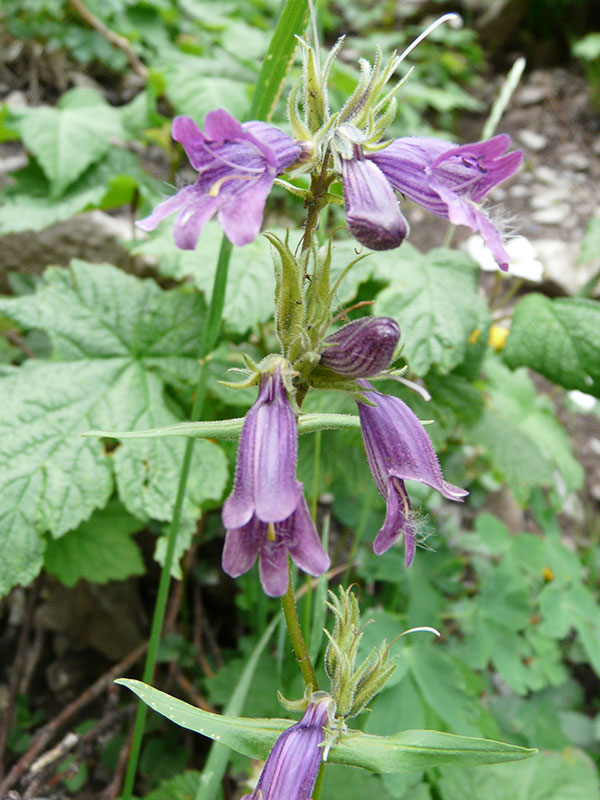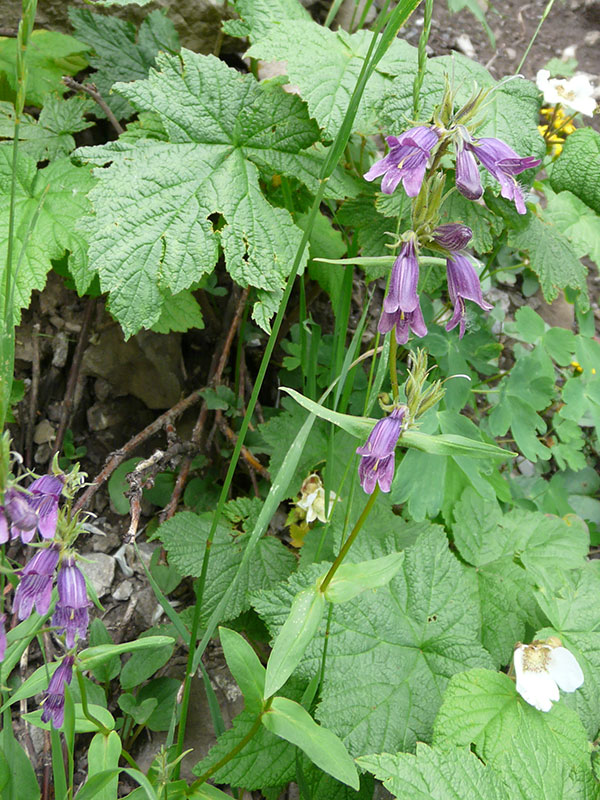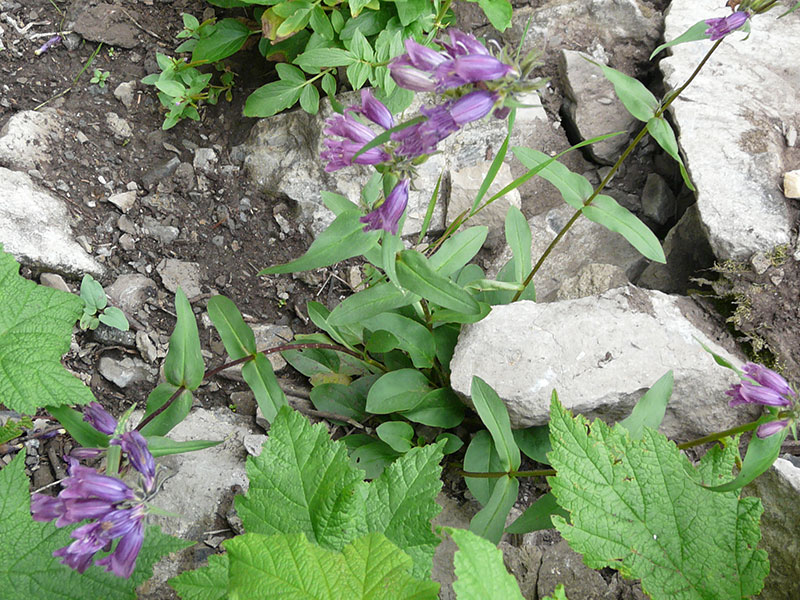Penstemon whippleanus / dusky beardtongue
- large-ish purple or creamy-white tubular flowers
- from the side, flowers look like a gaping mouth; 2 lobes above, 3 below
- flowers typically hang down in small clusters at the top of their stems
- opposite, sessile leaves on flowering stems
- subalpine on rocky areas, as at Darby wind cave
Also known as: Whipple’s beardstongue, Whipple’s penstemon, dusky penstemon
Of all the penstemons, dusky beardtongue has perhaps the largest and showiest flower. The flowers are tubular, but not narrow like other penstemons. They have 3 lobes below and 2 above. Typically, they are on the purple side, sometimes quite darkly so, but they may also be creamy white with light mauve/lavender/purple blush. The different colors can co-occur as they do near the Darby wind cave. The flowers are covered with minute glandular hairs which can really sparkle when they catch the light just right. The flowers are in clusters, 2-7 per cluster, on the upper half of leafy stems.
Dusky beardstongue is a perennial herb with tufted stems, perhaps a couple feet tall. The stems arise from a shallow, branched root crown. The leaves tend to have glandular hairs, but only on the upper side. Like other “hairy” plants, this may or may not be true in any given case. On the flowering stems – which may be purple themselves – the leaves are lance shaped, in opposite pairs and widely spaced. The individual leaves are sessile, almost clasping. This is illustrated in a couple of the gallery photos.
Overall, as you make your climbs to higher altitudes in later July or August, this is a plant that serves as a great reward for the effort. It is pretty much limited to open areas on rocky slopes in subalpine meadows… unless, of course, you visit one of the many garden stores that sell it as an ornamental.
| Color | |
|---|---|
| Family | |
| Blossom size | |
| Inflorescence size | |
| Inflorescence type | |
| When? | |
| Where? |




